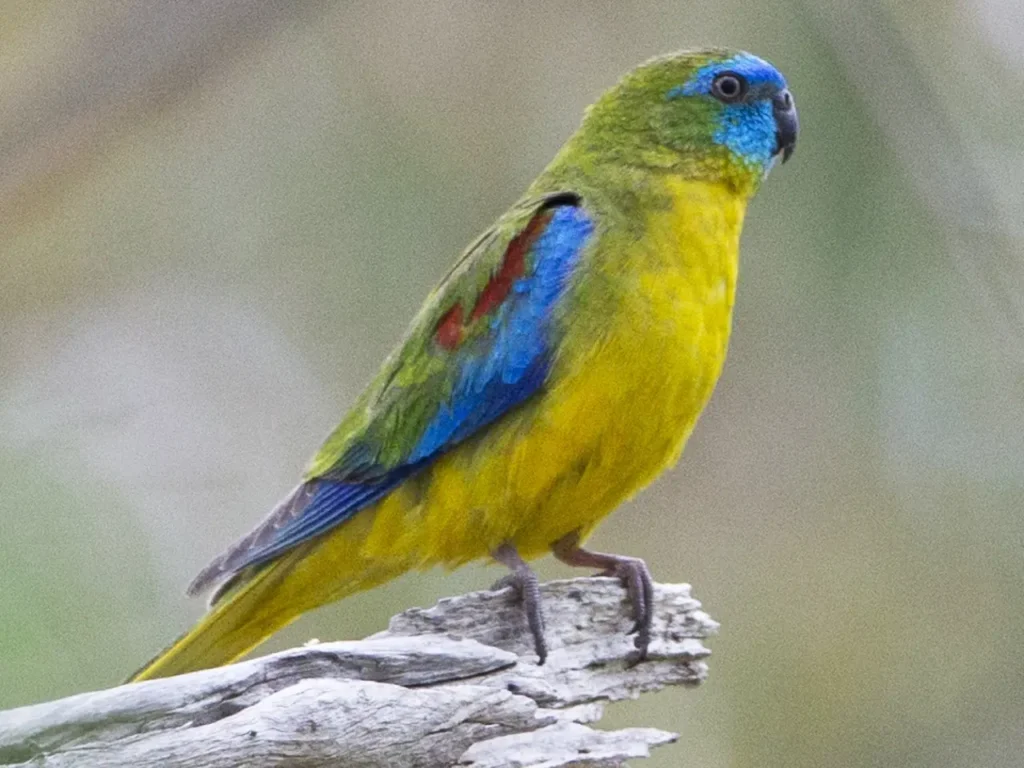The Scarlet-Chested Parakeet (Neophema splendida) is a small, vibrant bird native to the woodlands and grasslands of central Australia. With its striking plumage and cheerful demeanor, this parakeet has become a favorite among avian enthusiasts and birdwatchers. In this article, we will explore the beauty, behavior, habitat, and conservation status of the Scarlet-Chested Parakeet, shedding light on why it is considered a jewel of the avian world.
Scarlet-Chested Parakeet images
























Appearance and Plumage
The Scarlet-Chested Parakeet is aptly named for the vivid scarlet patch that adorns its chest, contrasting with the bright green feathers that cover the rest of its body. The wings exhibit a beautiful combination of emerald green and cobalt blue, while the tail feathers display a gradient of blue, green, and yellow hues. Males and females have similar plumage, although males tend to have brighter and more intense colors.
Behavior and Vocalizations
Scarlet-Chested Parakeets are known for their playful and social nature. They are often seen in small flocks or pairs, foraging for food and engaging in social interactions. These parakeets have a distinctive and melodious call, consisting of soft chirps and whistles. Their vocalizations are often heard during flight or when communicating with other members of their flock.
Habitat and Range
The Scarlet-Chested Parakeet inhabits the open woodlands, grassy savannahs, and spinifex-covered areas of central Australia. They prefer areas with access to water and vegetation for foraging. These parakeets have adapted well to arid and semi-arid regions and can withstand the extreme temperatures and harsh conditions of the Australian outback.
Feeding Habits
Scarlet-Chested Parakeets primarily feed on a variety of seeds, grasses, fruits, and flowering plants. They are especially fond of grass seeds and can often be seen foraging on the ground or perched on grass stems, plucking seeds from the seedheads. They also feed on nectar from flowers when available, using their specialized beaks to extract the sweet liquid.
Breeding and Nesting
During the breeding season, which typically occurs from August to January, Scarlet-Chested Parakeets form monogamous pairs. They construct their nests in tree hollows, termite mounds, or crevices in rocks. The female lays a clutch of 4 to 6 eggs, which she incubates for approximately 18 to 20 days. Both parents share the responsibilities of incubation and caring for the chicks until they fledge.
Conservation Status and Threats
The Scarlet-Chested Parakeet is currently listed as a species of least concern on the IUCN Red List of Threatened Species. However, habitat loss due to land clearing and human development poses a potential threat to their population. The introduction of non-native species, such as predators and competitors, also poses a risk to their survival. Conservation efforts, including the protection of their natural habitats and raising awareness about their ecological importance, are crucial for the long-term survival of these beautiful parakeets.
The Scarlet-Chested Parakeet’s vibrant plumage, playful behavior, and cheerful presence make it a beloved bird among avian enthusiasts. Its striking colors and melodious vocalizations bring joy and beauty to the Australian outback. By appreciating and safeguarding their natural habitats, we can ensure that future generations have the opportunity to witness the splendor of the Scarlet-Chested Parakeet in the wild, reminding us of the incredible biodiversity and wonders of the avian world.